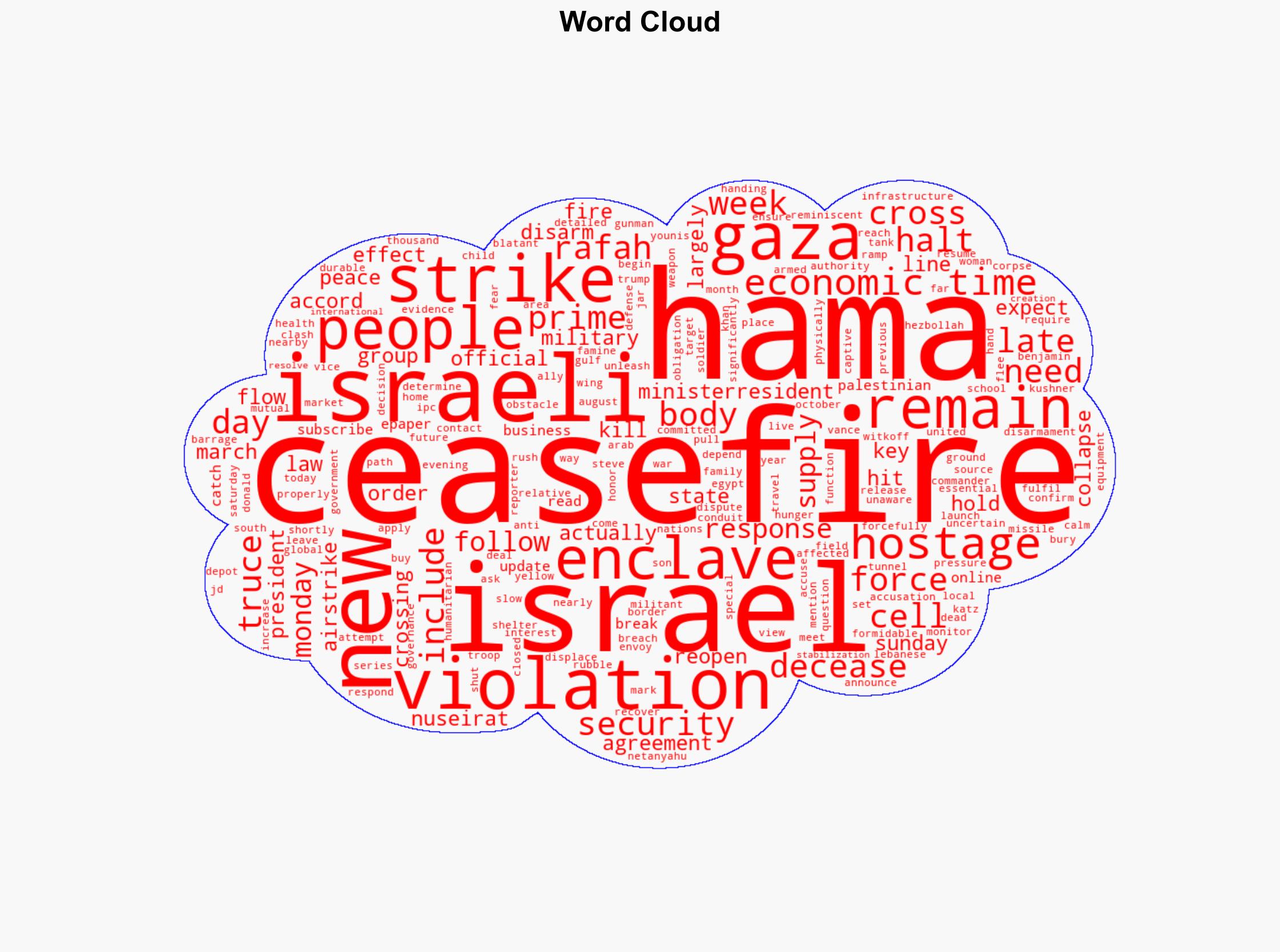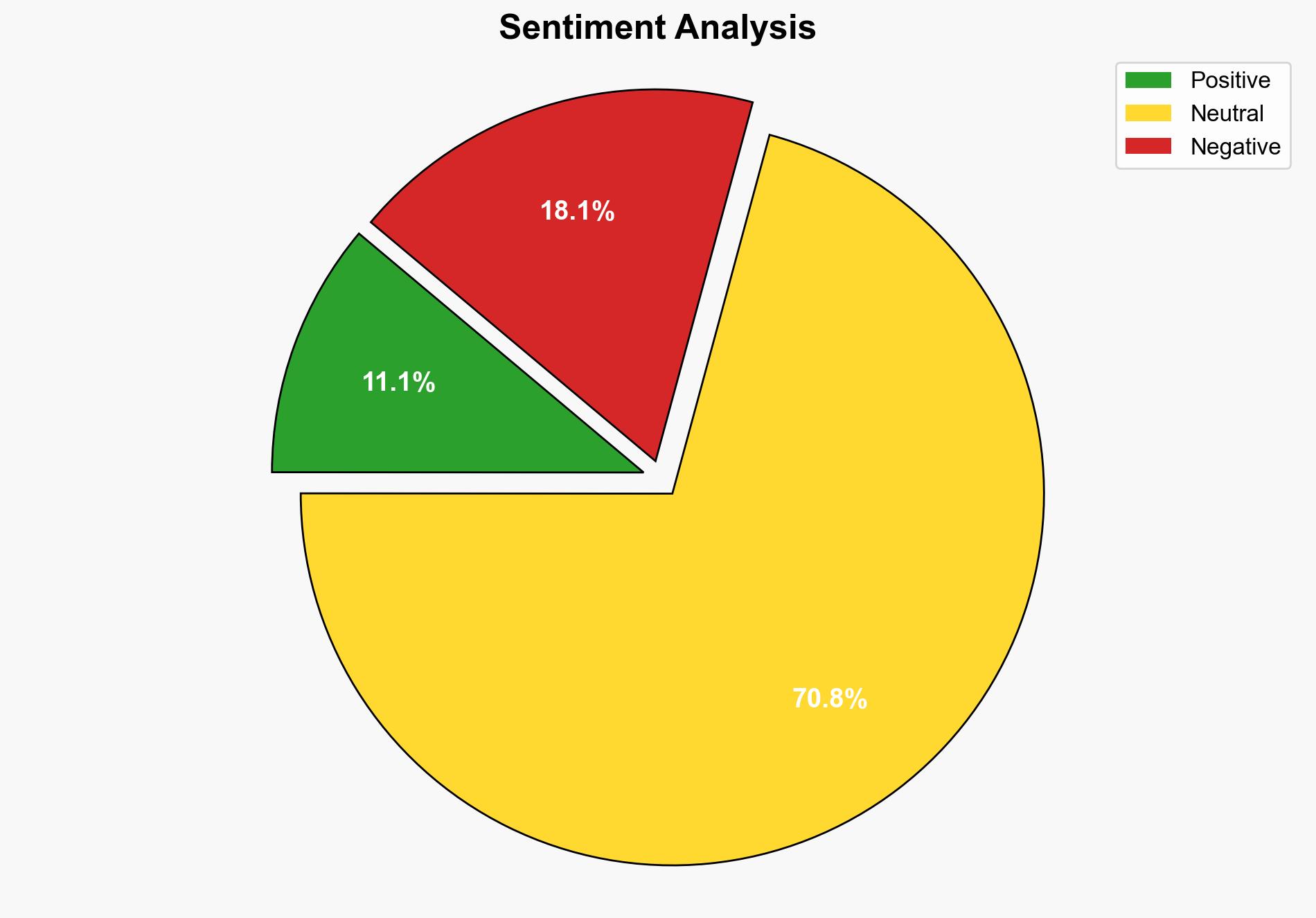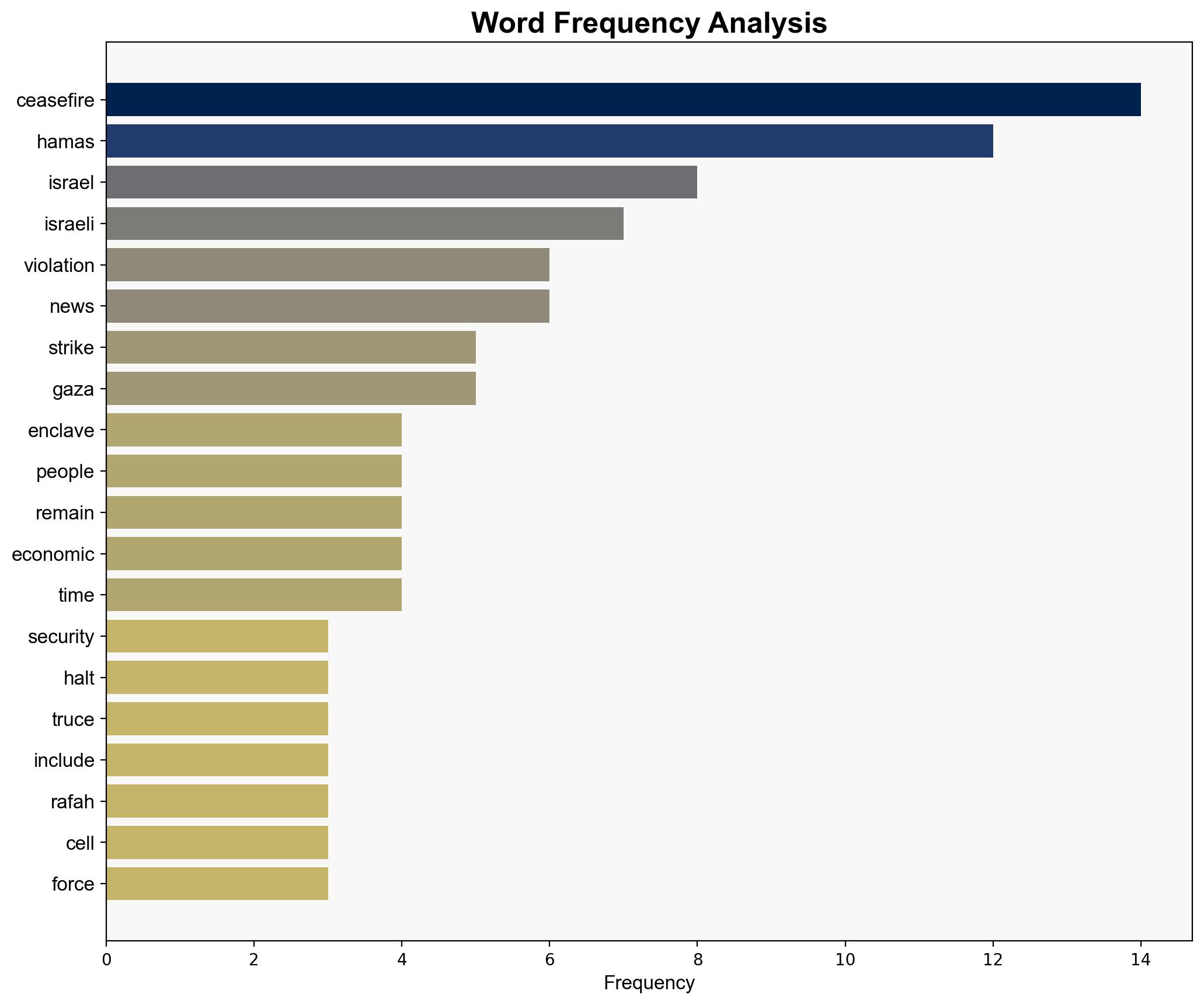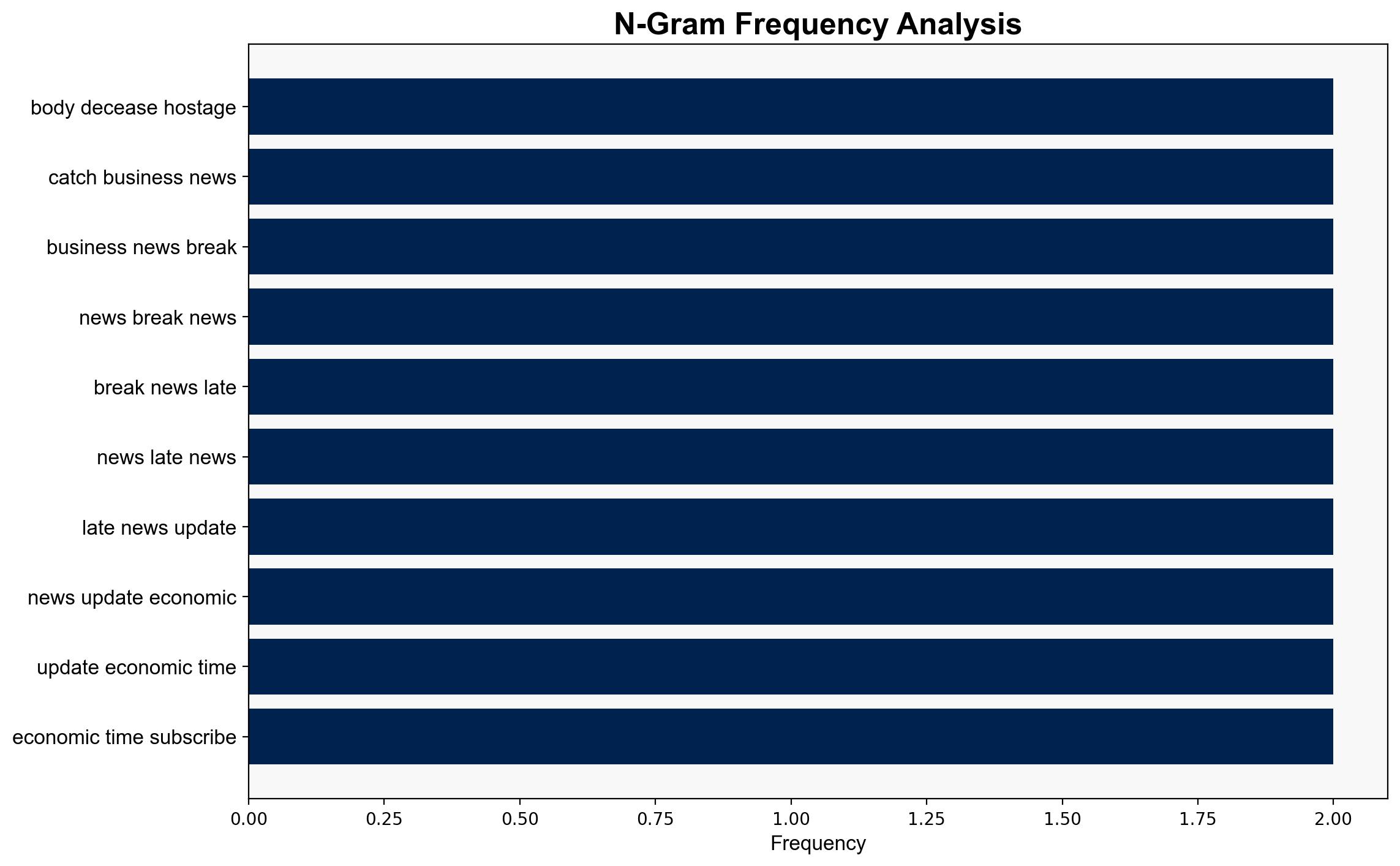Israel says ceasefire and aid to resume after airstrikes kill 26 in Gaza – The Times of India
Published on: 2025-10-20
Intelligence Report: Israel says ceasefire and aid to resume after airstrikes kill 26 in Gaza – The Times of India
1. BLUF (Bottom Line Up Front)
The current situation in Gaza is precarious, with the potential for further escalation despite intentions to resume the ceasefire and aid flow. The most supported hypothesis is that the ceasefire will remain fragile, with intermittent violations likely. Confidence level is moderate due to the complex interplay of regional actors and internal pressures. Recommended action is to enhance diplomatic engagement and monitor compliance closely to prevent further deterioration.
2. Competing Hypotheses
1. **Hypothesis A**: The ceasefire will hold, and aid will resume effectively, leading to a reduction in hostilities.
– **Supporting Evidence**: Statements from Israeli officials and Hamas indicating commitment to the ceasefire; planned visits by international envoys.
– **Contradictory Evidence**: Recent airstrikes and accusations of ceasefire violations suggest underlying tensions.
2. **Hypothesis B**: The ceasefire will remain unstable, with frequent violations and potential for escalation.
– **Supporting Evidence**: Historical patterns of ceasefire breaches; ongoing military readiness and rhetoric from both sides.
– **Contradictory Evidence**: Diplomatic efforts and international pressure may incentivize adherence to the ceasefire.
3. Key Assumptions and Red Flags
– **Assumptions**: Both parties have control over their factions and can enforce the ceasefire; international actors will continue to exert pressure for peace.
– **Red Flags**: Lack of clarity on the disarmament of Hamas; potential for miscommunication or miscalculation leading to renewed conflict.
– **Blind Spots**: Internal political dynamics within Israel and Gaza that may affect decision-making.
4. Implications and Strategic Risks
– **Patterns**: Cyclical nature of ceasefire agreements and violations in the region.
– **Cascading Threats**: Escalation could lead to broader regional conflict, affecting neighboring countries and international relations.
– **Potential Escalation Scenarios**: Failure of diplomatic efforts could result in increased military engagements and humanitarian crises.
– **Economic and Psychological Dimensions**: Prolonged instability may worsen economic conditions and exacerbate civilian suffering, leading to increased radicalization.
5. Recommendations and Outlook
- Enhance diplomatic channels to ensure clear communication and conflict resolution mechanisms.
- Deploy international observers to monitor ceasefire compliance and aid distribution.
- Scenario Projections:
– **Best Case**: Ceasefire holds, leading to a stable peace process and improved humanitarian conditions.
– **Worst Case**: Full-scale conflict resumes, causing significant casualties and regional destabilization.
– **Most Likely**: Intermittent ceasefire violations with periodic escalations, requiring ongoing diplomatic interventions.
6. Key Individuals and Entities
– Benjamin Netanyahu
– Donald Trump
– Steve Witkoff
– Jared Kushner
– JD Vance
7. Thematic Tags
national security threats, regional focus, counter-terrorism, geopolitical stability





